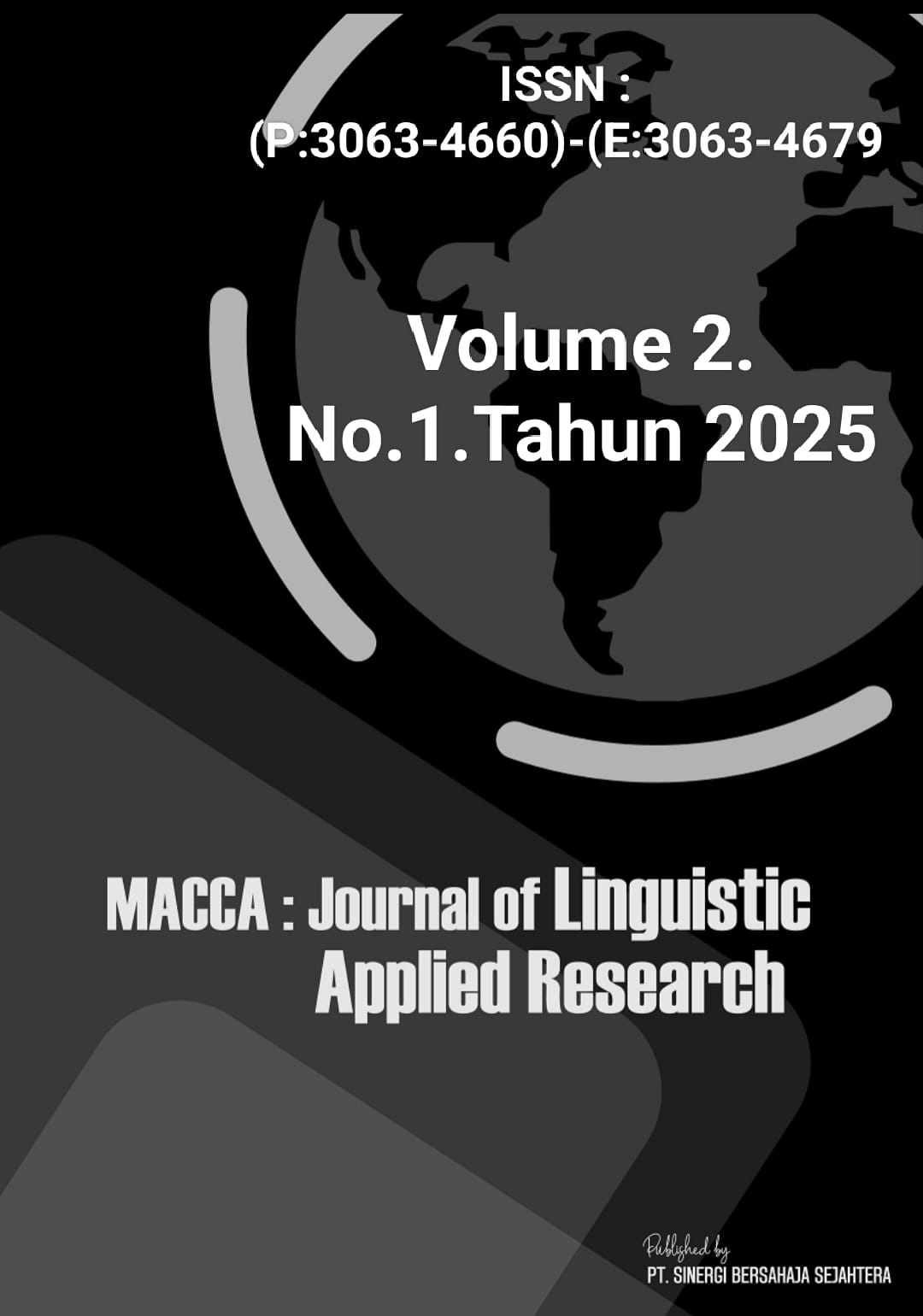Investigating The Impact Of Music In English As A Foreign Language
Keywords:
English songs, vocabulary, pronunciation, music-based learning, EFL, quantitative researchAbstract
This study aims to examine the effectiveness of using English songs to enhance students’ vocabulary mastery and pronunciation skills in an English as a Foreign Language (EFL) context. The research was motivated by the recurring challenges faced by junior high school students in retaining vocabulary and improving pronunciation accuracy when taught using conventional methods. English songs were introduced as an innovative instructional medium, expected to create a more enjoyable, interactive, and emotionally engaging learning experience. The research applied a quantitative approach, employing a one-group pretest and post-test experimental design. The participants were 21 ninth-grade students from SMPN 1 Panca Rijang. Data were collected through structured oral tests focused on vocabulary recognition and pronunciation ability. The data were analyzed using descriptive statistics, paired sample t-test, effect size calculation (Cohen’s d), and visual representation through bar charts. The results showed a substantial improvement in student performance. The mean score increased from 16.33 (pre-test) to 24.66 (post-test). The paired sample ttest revealed a t-value of 5.87 with a p-value of 0.0000097, indicating a statistically significant difference. Additionally, the effect size (Cohen’s d) was calculated to be 12.63, which is categorized as an extremely large effect, highlighting the strong practical impact of the treatment. In conclusion, the integration of English songs into the teaching process proved to be highly effective in improving students’ vocabulary and pronunciation skills. This study reinforces the pedagogical value of music in EFL instruction and encourages educators to adopt music-based strategies to foster more meaningful and motivating language learning experiences. The findings offer both theoretical support and practical recommendations for language teachers seeking to enhance student outcomes through engaging and creative methodologies
References
Ayotte, S. (2004). The acquisition of verb forms through song. In C. M. Cherry, E. L. Garson, & J. M. Larson (Eds.), Selected proceedings of the 2004 conference on Applied Linguistics. Cascadilla Proceedings Project.
Baddeley, A. (2003). Working memory and language: An overview. Journal of Communication Disorders, 36(3), 189–208. https://doi.org/10.1016/S0021-9924(03)00019-4
Brown, H. D. (2007). Principles of language learning and teaching (5th ed.). Pearson Education.
Cohen, A. D. (1998). Strategies in learning and using a second language. Longman.
Engh, D. (2013). Why use music in English language learning? A survey of the literature. English Language Teaching, 6(2), 113–127. https://doi.org/10.5539/elt.v6n2p113
Fonseca-Mora, M. C. (2011). Foreign language acquisition and melody singing. ELIA, 11, 13–29.
Gardner, H. (1993). Frames of mind: The theory of multiple intelligences (2nd ed.). Basic Books.
Krashen, S. D. (1982). Principles and practice in second language acquisition. Pergamon Press.
Ludke, K. M., Ferreira, F., & Overy, K. (2014). Singing can facilitate foreign language learning. Memory & Cognition, 42(1), 41–52. https://doi.org/10.3758/s13421-013-0342-5
Medina, S. L. (1990). The effects of music upon second language vocabulary acquisition. ERIC Document Reproduction Service No. ED352834.
Medina, S. L. (1993). The effect of music on second language vocabulary acquisition. National Network for Early Language Learning, 6(3), 1–8.
Murphey, T. (1992). Music and song. Oxford University Press.
Nation, I. S. P. (2001). Learning vocabulary in another language. Cambridge University Press.
Nunan, D. (2003). Practical English language teaching. McGraw-Hill.
Oxford, R. L. (1990). Language learning strategies: What every teacher should know. Newbury House.
Puhl, C. A. (1989). Upbeat! Activities with music, movement, and mime. Prentice Hall.
Richards, J. C., & Rodgers, T. S. (2014). Approaches and methods in language teaching (3rd ed.). Cambridge University Press.
Richards, J. C. (2001). Curriculum development in language teaching. Cambridge University Press.
Schoepp, K. (2001). Reasons for using songs in the ESL/EFL classroom. The Internet TESL Journal, 7(2).
Schön, D., Boyer, M., Moreno, S., Besson, M., Peretz, I., & Kolinsky, R. (2008). Songs as an aid for language acquisition. Cognition, 106(2), 975–983. https://doi.org/10.1016/j.cognition.2007.03.005
Shulman, L. S. (1986). Those who understand: Knowledge growth in teaching. Educational Researcher, 15(2), 4–14.
Sloboda, J. A. (2005). Exploring the musical mind: Cognition, emotion, ability, function. Oxford University Press.
Wallace, W. T. (1994). Memory for music: Effect of melody on recall of text. Journal of Experimental Psychology: Learning, Memory, and Cognition, 20(6), 1471–1485. https://doi.org/10.1037/0278-7393.20.6.1471
Yalç?n, S., & ?nceçay, G. (2014). Integrating songs into English language teaching. Journal of Language and Linguistic Studies, 10(1), 78–94.
Zatorre, R. J., & Salimpoor, V. N. (2013). From perception to pleasure: Music and its neural substrates. Proceedings of the National Academy of Sciences, 110(Supplement_2), 10430–10437. https://doi.org/10.1073/pnas.1301228110
Downloads
Published
How to Cite
Issue
Section
License
Copyright (c) 2025 Muhammad Irvan Afandhy, Buhari, Lababa, Ibrahim Manda

This work is licensed under a Creative Commons Attribution-ShareAlike 4.0 International License.



































